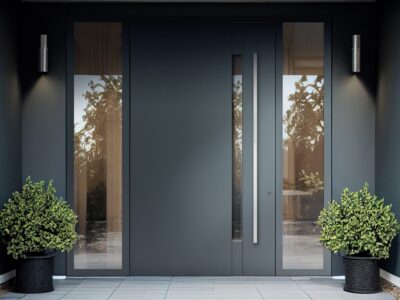Why Passive House Design is the Gold Standard for Sustainable, Low-Energy Homes in the UK
As the man made environment continues to account for over one-third of global energy consumption, energy-efficient building standards are no longer a luxury—they’re a necessity.
Among the most stringent and respected of these is the Passive House standard, a globally recognised benchmark for ultra-low energy buildings that prioritise thermal comfort, airtightness, and long-term affordability.
What is a Passive House?
A Passive House or Passivhaus, (as it is often referred to in Europe) is a high-performance building that uses advanced construction techniques and integrated building systems to drastically reduce energy use.
Designed to operate without traditional central heating systems, these buildings rely on passive solar gain, thermal insulation, and mechanical ventilation with heat recovery (MVHR) to maintain a stable indoor climate year-round.

The Business Case for Passive House Design
Key attributes include:
- Ultra-low space heating demand: Typically less than 15 kWh/m²/year—up to 90% less than conventional building stock.
- Airtight building envelope: Eliminates cold draughts and reduces unwanted heat loss.
- Continuous mechanical ventilation: Delivers fresh, filtered air and extracts stale air, improving indoor air quality.
- Superior thermal comfort: Even internal surface temperatures that remain stable, even in extreme external weather conditions.
High-Performance Glazing: A Critical Element in Passive House Construction
Windows play a pivotal role in Passive House design. Traditional double glazing often falls short in terms of energy efficiency. In contrast, high-performance aluminium windows—such as those from AluFoldDirect—feature thermally broken frames, triple glazing options, and low U-values, often as low as 0.8 W/m²K.
These energy-efficient aluminium windows not only help meet Passive House criteria but also allow for maximised natural light, which contributes to lower lighting loads and improved occupant wellbeing. Their slim sightlines also add aesthetic appeal, an increasingly important factor in modern residential and commercial architecture.
Passive House in the UK: A Growing Movement
The UK Passive House movement has gained significant momentum, particularly as developers and architects respond to increasing demand for sustainable housing solutions.
With organisations like the Passivhaus Trust leading advocacy and education in the UK, and growing consumer awareness of energy costs and climate change, Passive House is quickly becoming the go-to standard for net-zero-ready homes and carbon-conscious building projects.

Beyond environmental benefits, Passive House construction offers clear commercial advantages:
- Lower lifecycle costs due to reduced energy bills and maintenance.
- Future-proofing against tightening building regulations and energy performance targets.
- Enhanced property value and desirability among eco-conscious buyers and investors.
Incorporating Passive House principles into UK construction projects isn’t just an ethical or environmental decision—it’s a strategic one.
With high-performance products like energy-efficient aluminium glazing from AluFold Direct and increasing support from the UK building industry, there has never been a better time to adopt this internationally proven design approach.
By building to Passive House standards, professionals across the architectural, engineering, and construction sectors can deliver homes that are truly future-ready: low-energy, high-comfort, and resilient in the face of rising energy costs and climate challenges.
Latest posts.
Contact us
Our friendly team would love to hear from you.
